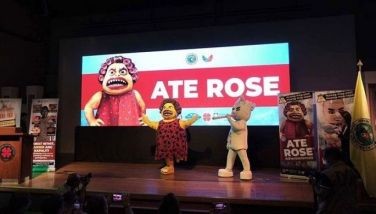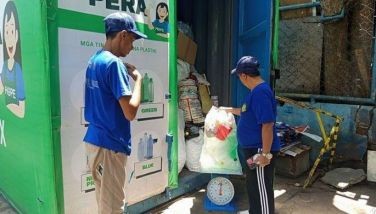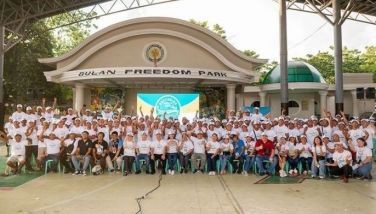Madness, museums and malice
“There is really no Filipino cuisine. Everything is borrowed from the Chinese, the Spanish or the Americans.”
I almost choked on my food when I heard a Filipino loudly explain our food to his foreign guests. I wanted to interrupt their conversation but my inner Emily Post prevailed upon me to keep my peace. I was with prim and proper persons and I did not want to embarrass them if I made a scene (they were also paying for my lunch). More importantly, it was in a restaurant that I liked and I figured that I would probably not be able to return there if I caused a ruckus.
After my annoyance subsided, I realized that the person who made the remark probably wanted to sound erudite. He could also have quoted a line from an old magazine. There was a time when the concept of a Filipino culture as a damaged culture was the prevailing theory. He may have also read a forwarded email that said that Filipinos are not Asians but fake or trying-hard Americans. Besides, the issues of Filipino identity and cultural authenticity continue to be debated upon and written about in the academe. Then again, maybe he was really a self-hating Filipino.
I’m just happy that there are more venues now for learning about Filipino history and culture and that doing so is no longer limited to reading those boring Araling Panlipunan books (which probably contain errors, anyway).
The recent Gabii sa Kabilin is a good example. One hundred pesos gained entry to six participating Cebu museums. An additional fifty pesos gave unlimited tartanilla rides between the museums. I missed the event but friends who went enjoyed it so much and look forward to the next one. I do, too.
A semester taking courses in Museum Studies has taught me that museums are places for memory and forgetting: What objects are displayed will determine what stories are told. Stories not told have more chances of being forgotten. Most of the museums in Cebu tell stories of the Spanish colonial era lifestyle and the Catholic Church. Museo Sugbo fills the gaps with exhibits depicting Cebuano revolutionaries, the American colonial period and the Japanese occupation. We do not have a museum showcasing contemporary Cebuano culture or a museum displaying Cebuano art, contemporary or otherwise. Still, what we have now is a lot better than what was available in the 1980’s.
Except for a small place where dead butterflies were framed, I don’t recall visiting a museum in Cebu for a field trip when I was in grade school or high school. It could be that at that time only Fort San Pedro was open to the public (and Museo Sugbo did not exist). I went to Fort San Pedro only because my family frequented the place on weekends. My siblings and I had so much fun running around and playing with the cannons.
Since classes are starting, I hope that more teachers will bring their students to museums and not organize field trips to malls or game shows. In Manila, I noticed that while some groups do go to museums, the visit is perfunctory and the students rush through the place to get to the mall or the game show. Worse, some teachers do not pick age-appropriate exhibits or cannot explain what are on display to their students. A friend’s five-year-old child had a field trip to a museum where nude paintings were on exhibit.
When he got home, he told his mother that they looked at “bastos” pictures. In instances like this, it might be better to just keep the kids in school rather than fill their minds with malice and misinformation.
* * *
Email: lkemalilong@yahoo.com
- Latest
- Trending


























